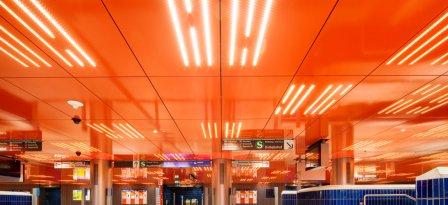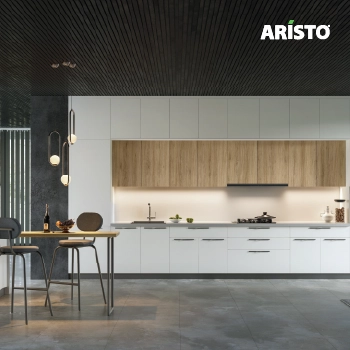
In the last few weeks, our behaviours have changed drastically. Many of us are learning to adjust to the disruptions to our daily routines, both in our families and in our professional lives. While some changes are manageable, others are far more difficult. These could include things like keeping one’s office teams engaged and connected remotely, while constantly checking the news for some indications that life will return to the way it was.
However, the reality is we have entered a new normal that could last weeks, months or even years for some businesses. The Covid19 pandemic will even create permanent lifestyle and business changes. The sooner we adjust to this new reality, the better.
Lot of businesses are now witnessing the shocks and anxious situations as a result of the pandemic. However, with time, we will all get accustomed to the new normal. While waking up each morning alive with the rising sun, these situations will eventually not deliver the same amount of shock and anxiety as they currently do. In all wisdom, we have to wait for this balance to be achieved.
An analogy can be drawn from World War-II. During the bombing of London, the Germans assumed that if they bombed the City every day for months, the British people would eventually break and surrender. Instead, the opposite occurred. As days passed and each morning the vast majority of citizens woke up alive, the bombing became a part of life and no longer caused the same degree of fear. The British became more resilient as they became normalized to the crisis. In all likelihood, we will emulate their example as time passes. But, life before and after World War-II was not same.
WHAT WE CAN CONTROL
The biggest difference between those who are staying consistent, adapting to the changes during this crisis and those who are struggling, is a willingness to accept the new normal and a determination to focus on what they can control at this point. These are the business leaders pivoting quickly, the parents building home-school schedules and the healthy people social distancing because they feel a responsibility to protect others.
By contrast, those who are holding on to the past and acting from a place of fear and scarcity will struggle the most. Their limited energy is focused inward and backwards, and not on looking outward toward what others need both now and in the future. The future is suddenly here. We need to truthfully take stock of our situation of what is in our control. I emphasize on the word ‘truthfully’.
APPROACHING THE BUSINESS IN NEW NORMAL
Generally, I approach business through a long-term view, making careful decisions that include many different stakeholder perspectives. But the long-term future is now suddenly upon us. As the world has changed in just a few weeks, the long-term decisions by many organizations have to be taken within the next 2-3 months, and this may determine if they will even exist in their current form a year from now.
Many are calling this pandemica World War, an association I tend to agree with, although, this time the world is united against a common enemy. In order to fight this enemy, today’s leaders must adopt a wartime mind-set and understand that victory will mean having to deviate from a peacetime playbook. Life or business as normal will not get us there.
The war-time playbook requires four critical adjustments that must be made— urgently:
- Focus on The Collective Win
Wartime forces us to temporarily shift from an individual mind-set to a collective one that evaluates what is best for the most people or most companies, both up-stream and down-stream of our business. Wartime requires a different work approach and commitment. During World War II, most people who were capable of working had to either go to war or work in a factory producing military supplies. There were no other options.
I have been speaking to some leaders from the lighting industry. The common concerns which came out while speaking to them are – 1) in some companies, who are taking wartime action, their younger employees are struggling most to adjust to the collective mind-set; and 2)some have underestimated the gravity of the situation arisen due to the pandemic and have taken self-centred actions. This individualistic outlook was most evident in the defiant religious meetings or mass movement of migrant workers and how it put other people in harm’s way. The businesses need to move away from self-centred and individualistic approach.
- Speed-up Decision Making and Adjust to Ambiguity
Peacetime schedules, systems, processes and communication are very different from those required during the Wartime. It’s crucial to accept the need to change and to act quickly and decisively, even while operating with ambiguity and incomplete information. I haven’t found anyone yet who feels they acted too early in taking precautionary action. In fact who took early precautionary actions are better protected from the pandemic now. The same applies to businesses too.
- Taking Tough Decisions Based on Hierarchy of Needs
As this pandemic crisis escalates, many companies are facing really hard situations with no easy answers. It’s a new landscape of hard decision landmines. For example, many emergency room doctors are facing unbelievably difficult ethical choices such as who gets a ventilator and who does not. Most doctors never thought they’d have to make these types of “utilitarian” decisions (associated with wartime playbook) – but faced with such a high demand of need amidst scarce resources, making decisions based on a hierarchy of needs is the only way to get through the battle.
- Focus on What We Can Control War-time playbook requires us to face the new reality by determining and focussing on what we can control. However, many business leaders are coping with this business crisis by looking to endure this crisis and then hoping to get back to pre-crisis time when crisis has passed. But, this peacetime playbook will not work. The wartime playbook requires us to get clarity on what actually fulfils us, rather than what just fills our time.
Many of us have learned that, due to the current environment, everyone we know is suddenly available, often for the first and perhaps the only time in our lives. This has led to an extraordinary amount of online reunions where groups of people who haven’t connected in years can catch-up without a specific agenda.
One reason these reunions haven’t happened earlier is many of us were “too busy.” This crisis has given us a unique opportunity to re-connect new and re-evaluate our old relationships and then offer our time and energy accordingly. Now is the perfect time to expand your business reach, business understanding in the new normal. You may be missing a once in a lifetime opportunity.
The New Normal In Lighting Industry
The long-term of 3 months back (pre-pandemic) has become very short-term (next 2-3 months). Let us understand this in detail.
Enabling IoT In Lighting With Artificial Intelligence (AI) Connected To Humans
A technology that can help eliminate the need of touching various surfaces in offices and public places is the Internet of Things (IoT). Further, IoT combined with AI can help prevent diseases like Covid19 by eliminating the need to touch items to operate them in various scenarios, be it at home, a hotel and offices.
Going Beyond Smart – Offices, Residences, Cities, Buildings
IoTand AI tech is no longer a luxury, but a necessity. While the world continues to live under the cloud of uncertainties and fear arising because of the COVID-19 outbreak, its impact on everyone’s psychology and behaviour is unimaginable. Everyone is trying to cut down contact with strangers or with exposed surfaces that are touched by several people to avoid the possibility of catching the infection. There are few items such as switches and remote controls that everyone ends up touching multiple times in a day, even amid the health scare we are currently witnessing.
As lighting is all pervasive, the IOT cum AI lighting technology can help eliminate the need of touching such items. Further, speeding up Li-Fi acceptance and combined with human connected AI, can help the lighting industry be the central tool to help prevent diseases like COVID-19 by eliminating the need to touch items to operate them in various scenarios, be it at home, a hotel, and offices.
Google Assistant, Alexa, Siri and Mobile Apps have already made Smart Home to be operated without a touch. The plethora of IoT devices such as smart video door phones, smart locks, smart lights, smart TVs, and smart air conditioners, smart lighting, among others, is now being operated without a touch. The time is now to extend this to commercial and public spaces. The lighting luminaires is the only edge device which provides electric power as well access to internet to other edge devices. The lighting industry must now think in IT (information Technology) way. The leaders in lighting industry have to take the next technology step which helps in reducing the physical contact with exposed surfaces.
Smart Office major use cases of IoT in an office environment will expand to cover Smart water and beverage dispensers, smart access controls, smart facility management that includes control of lighting and AC using IoT. These Smart Devices, when connected to Li-Fi Luminaire, can be controlled via gestures, mobile apps and voice commands, leaving no room for any physical contact. The time now is to plan for ‘Smart Access’ and not just smart controls. Smart Lighting Control is currently non-biometric or not human connected. Lighting needs to combine RFID tokens or Bluetooth technology on mobile apps. This will enable employees at the workplace to get access to specific areas without having any need to touch any access control system, which are otherwise used by multiple employees each day.
Smart facility management will have to move beyond helping to reduce energy consumption and also move beyond the need to control lighting and HVAC only. Using a centralised cloud accessible dashboard, facility managers will have to manage all electrical devices in all areas of office or hotel. They will be setting schedules, scenarios, tagging authorised personnel supported by AI rules for controlling and setting appropriate modes for resources and not just lights and HVAC, but all the devices.
Technology already exists for making the IOT Luminaire to incorporate “TOUCHLESS TECHNOLOGY” much better than any other edge device. Go, Lighting Industry Leaders, Go. Your time has come. The pandemic has opened a big opportunity to you. Grab this opportunity and open the door to the future in Lighting.
A Brief History Of Lighting & Sudden Future
Since the invention of electric lighting in the year 1870 till date, we can classify the lighting era into 4 broad phases, namely:
Lighting 1.0:
From the start till about 1970, we can call it an era of Incandescent Lamps, Gas Discharge lamps and, magnetic ballasts. Lighting efficacies were low and increasing gradually.
Lighting 2.0:
From mid Seventies till about year 2000, rapid developments were taking place in CFL, more efficient linear fluorescent lamps, better Colour rendering properties and electronic ballasts. In general, energy efficient lighting was taking momentum & sustainability in lighting was being given prominence.
Lighting 3.0:
From year 2000 onwards, the LED Lighting systems and lighting controls have developed extremely fast. In last few years the LED lighting has practically taken over all areas of conventional lighting.
Lighting 4.0:
In recent times (before pandemic), energy efficiency of LED Lightingwas moving rapidly from functional illumination to the one that communicates & interacts with its environment, as well as its users. The 3 essential componentsthat were fast becoming reality before Covid-19 were – a) High quality of light to enrich environment and to improve user productivity; b) Control & Communications – to help maximize ownership value & minimize costs.
The Covid-19 pandemic has shortened the Lighting 4.0 Era. The time has come to jump to, to what I call the advent of,LIGHTING 5.0 ERA
Lighting 5.0: SUDDEN FUTURE–
IoT Connected And Li-Fi Enabled Luminaires, Supported By Human-Tagged AI:
Just as Smart phones have evolved from analogue devices into all-encompassing mobile digital platforms and have become gateways to ‘Internet of Things’. Everyday life products surrounding humans will be based on Lighting 5.0 technologies & principles. The leaders in Lighting Industry have to now take lead to bring in AI (Artificial Intelligence) to Luminaires. The steps are needed to be taken to further ‘Internet of Lighting’ to next evolution of ‘AI Of Lighting’ – in almost all the lit spaces – be it the indoors or the outdoors.
Yes, I will call Lighting 5.0 era as ‘AI of Lighting’.
Last few years lot of work has already been done to make Lighting as the cornerstone for IoT infrastructure. The ‘Internet of Light’ is already a reality. The objective of ‘Internet of Light’ was to create new, improved experiences & services in commerce, buildings & city spaces. Various possibilities are given below:
Connected Commerce Connected Building Connected City
But life of Lighting 4.0 Era has been cut short by the Covid-19 pandemic. The lighting industry needs to show a new path to the world, a path of solving the new human behavioural issue of social distancing.
Product & Services Offerings And Internal Capabilities To Be Developed For Lighting 5.0
As lighting is everywhere, it is digital and can get connected. By creating an open & secure ecosystem based on IP, connected lighting can supported with Li-Fi can deliver the experience of the future for new services to the users & managers of the spaces. Various products and services offerings can be in the domain of –
Lighting Organisations – What Trends To Expect?
In this fast-changing scenario, one can expect the following changes to take place for existing Lighting organizations in their business models:
I. Illumination will not be the only service. Lighting is expected to deliver additional services based on IoT and AI technologies which offer social distancing solutions, i.e., touchless surfaces.
II. Lighting will no longer be the standalone activity for Projects & Professional Lighting activity, but will be part of a larger ecosystem of IT and IT enabled Projects business. This will necessitate a consortium of Organizations & Project Implementers to participate for a Project. This calls for new relationships on the horizon for lighting industry.
III. Fostering Lighting Leadership in Projects will require Luminaires to be IoT connected, act as gateway to internet through Li-Fi and lastly incorporate AI based tools and services for a seamlessly connected environment which keeps social distancing factor in mind. Thus, formation of consortium of organizations, each bringing its piece of technology and service, will become essential and important. The Lighting Organizations who have the necessary product range of Lighting 5.0 and combined with the necessary Techno-commercial capability will be able to differentiate from pre-pandemic lighting fixture companies.
In conclusion, the impact of COVID-19 in many ways is an equalizer, a leveller, and in my view, it’s also a pivot that will set the tone for a new normal. Almost the entire world is in lock-down mode and everyone is anxiously awaiting return to normal. But seriously ask yourself: Do you really want to go back to the normalcy prevailed before the onset of this pandemic? Don’t you see an opportunity to set a new normal? An opportunity to change? This is true for all of us as individuals, businesses, the Government and their policies and our general approach to mother-nature and its other constituents towards a harmonious co-existence.
Mr. Mayank Gupta is a thought leader in High Technology Markets in Controls, Automation & IOT Systems in fields of Professional Lighting; Pro Audio-Visual, Building Management Systems and Converged IBMS, AV & IT Networks. He has headed India business operations at AMX, NEC & Trilux Lighting. Email: mayankkg66@gmail.com, Mobile: +91 98105 55771



























